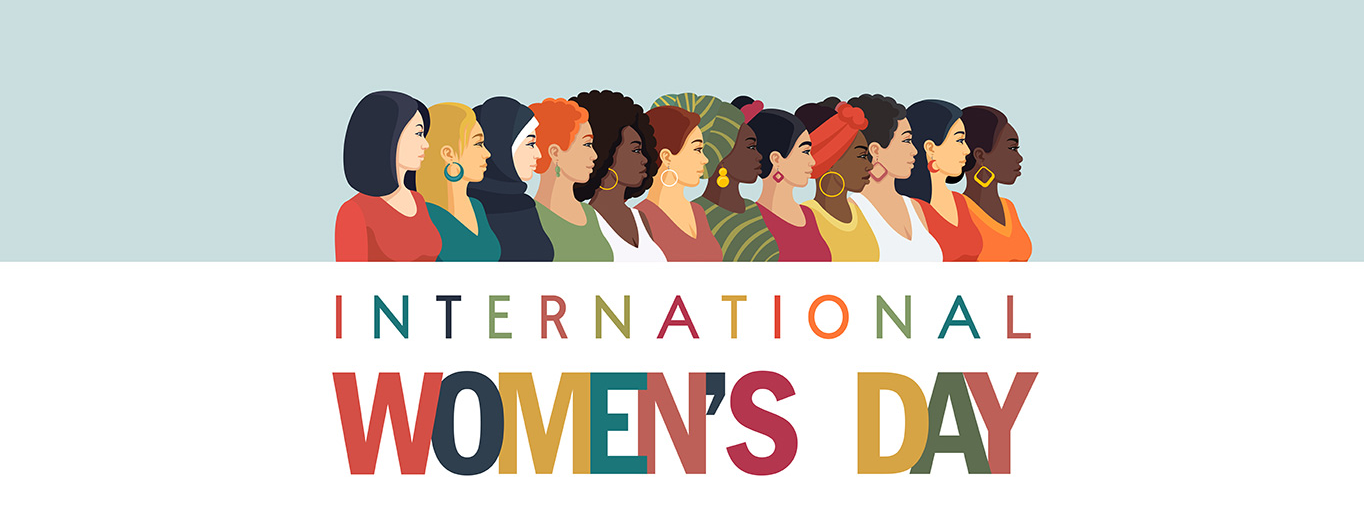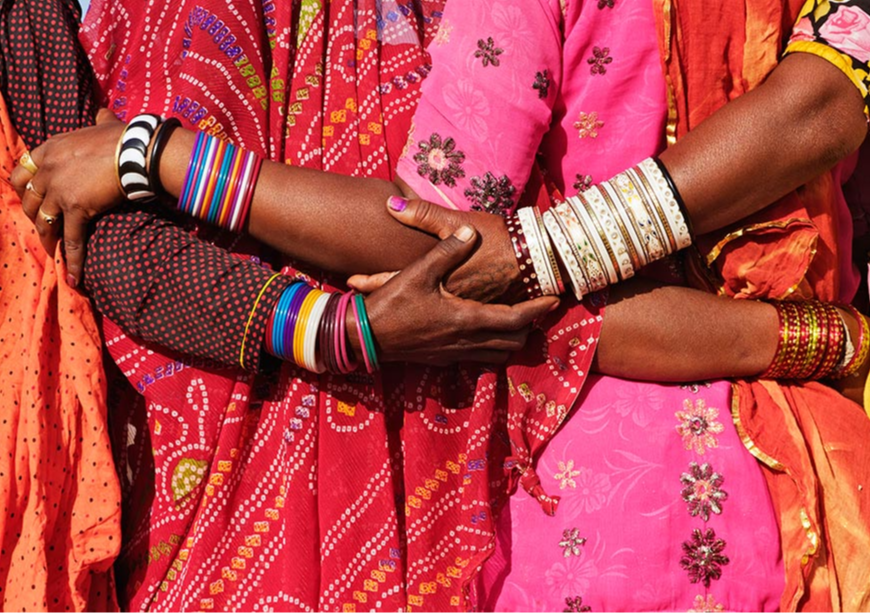
This article is part of the series — International Women's Day
Approaching International Women's Day 2024, we are reminded to celebrate women's achievements and push for greater gender equality. This moment urges us to examine gender norms and attitudes closely—both globally and domestically. Insights from national surveys reveal a range of cultural, social, and economic factors that shape these norms and attitudes. Despite significant strides towards equality, traditional perceptions of gender roles still influence many aspects of life, from educational opportunities to workforce participation and decision-making within households. These entrenched norms not only perpetuate disparities but also hinder the full realisation of women's rights and potentials.
Progress, backsliding, or stagnation?
A USAID report from last year on gender attitudes across 26 countries using Demographic and Health Survey (DHS) data, titled “Trends in Men’s Gender Attitudes: Progress, Backsliding, or Stagnation?”. It offers insights into how to view the dynamics of gender norms and their impact on society, especially in countries like India where these norms deeply influence social, health, and demographic outcomes. As the world gears up to celebrate International Women's Day 2024, with its theme “Invest in women: Accelerate progress,” this report's findings on attitudes towards gender norms become even more pertinent.
Despite significant strides towards equality, traditional perceptions of gender roles still influence many aspects of life, from educational opportunities to workforce participation and decision-making within households.
The report provides a nuanced view of the shifting landscape of gender norms and attitudes across the 26 countries studied. It reveals a general decline in men’s inequitable gender attitudes, preferences, and behaviours, indicating a positive shift towards more equitable gender norms. This change, however, has been uneven across different domains, with significant progress in women’s involvement in household decisions and decreasing justification for intimate partner violence, but less movement in changing attitudes towards women’s contraceptive use and son preference. Despite these advances, the gap between men’s and women’s gender attitudes persists, suggesting that while both genders are evolving, men’s views remain less egalitarian.
This disparity underscores the need for targeted interventions to accelerate the shift towards gender equality, emphasising the importance of societal change that influences both men and women. As we celebrate the achievements, the findings call for continued effort and collaboration to address the remaining inequities, making gender equality a reality for all. The report, however, does not make the country-level disaggregated data available.
The India story
Mirroring the overall focus of the USAID report on themes such as justification for intimate partner violence, women’s involvement in household decisions, women’s sexual autonomy, women’s contraceptive use, and son preference, this article tries to use data from various India DHS reports (called National Family Health Survey (NFHS) in India) to track the overall 21st century trends. Figure 1 follows the overall trend for Indian males aged (15-49), who justified wife beating on various grounds. The graph presents a declining trend in the number of Indian males aged 15-49 who engage in domestic violence, across various scenarios from 2005 to 2021. Notably, the greatest reduction is observed in the context of arguments and going out without informing, whereas attitudes towards neglecting children, spoiling food, and refusing sex show slower change and reversals. Despite the downward trend across some categories, a major proportion continues to justify wife-beating for at least one reason, indicating enduring challenges in shifting deep-rooted gender norms and highlighting critical areas for continued gender sensitisation efforts.
Figure 1: Proportion of Indian males (15-49) who would justify wife beating
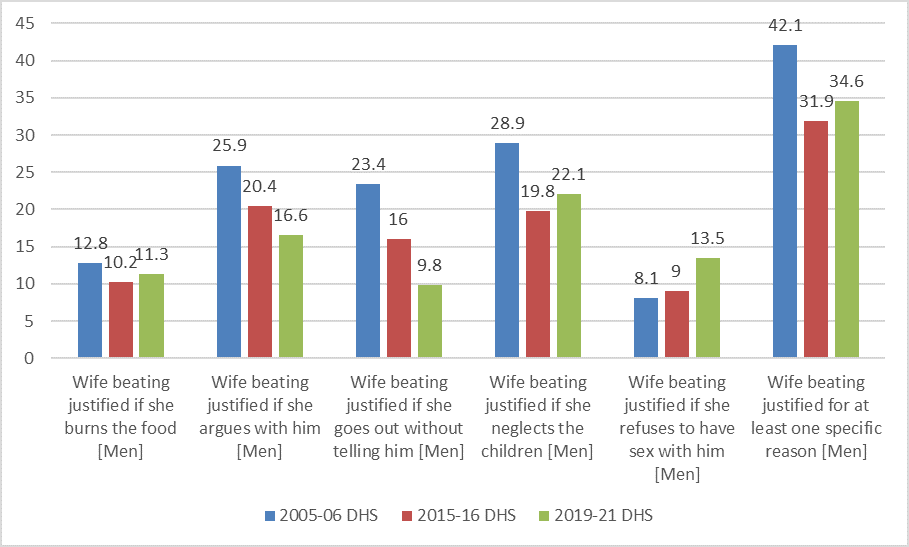
Source: Compiled by the author from https://dhsprogram.com/data/statcompiler.cfm
Figure 2 shows the trend across three survey rounds, of the proportion of Indian females (15-49) who say that they alone or jointly have the final say in making large purchases. From 2005 to 2021, it demonstrates a progressive increase in the autonomy of Indian women within this age group in making large purchases. While the overall percentage of women reporting the final say has risen significantly from 52.9 percent to 83 percent, the most substantial gains are seen in the 15-24 age group, which jumped from 35.1 percent to 83. percent. This trend points towards a positive shift in financial empowerment among younger women, a crucial marker for gender equality.
Figure 2: Proportion of Indian females (15-49) who say that they alone or jointly have the final say in making large purchases
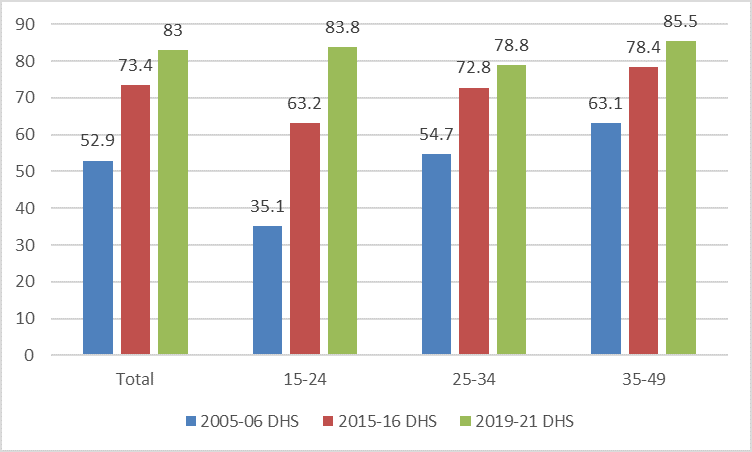
Source: Compiled by the author from https://dhsprogram.com/data/statcompiler.cfm
Figure 3 shows the proportion of Indian males (15+) who agree that a husband is justified in hitting or beating his wife if she refuses sex. It illustrates an increase in the proportion of Indian males who engage in wife beating for this reason. The overall agreement has risen from 8.9 percent to 13.3 percent over the periods surveyed. The age groups display varied changes, but notably, the 15-24 age group exhibits the highest current proportion of such males, a jump from 9.7 percent in 2005-06 to 14.6 percent in2019-21, which is a concerning trend. This data suggests a need to intensify efforts in addressing the roots of such gendered attitudes and to promote respect for women's autonomy and consent.
Figure 3: Proportion of Indian males (15+) who agree that a husband is justified in hitting or beating his wife if she refuses to have sex with him.
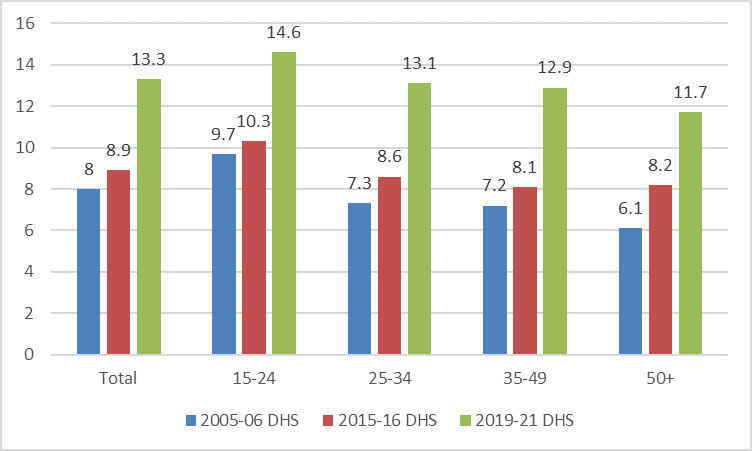
Source: Compiled by the author from https://dhsprogram.com/data/statcompiler.cfm
Figure 4 tracks the proportion among currently married Indian women, who said that family planning was mainly done by the wife, jointly by wife and husband and mainly by husband, respectively, from 2005-06 to 2019-21. It reflects a consistent increase in joint decision-making by wife and husband, with a slight decrease from 83.4 percent to 81.7 percent over the years. Decisions made mainly by the wife have seen a minor increase from 9.5 percent to 10.1 percent. In contrast, those primarily by the husband show an increase from 6.1 percent to 8 percent. These trends underscore the importance of continued efforts to promote equitable decision-making in family health matters, which is essential for fostering an environment where both partners participate equally in choices that shape their futures.
Figure 4: Family planning decision-making in Indian households
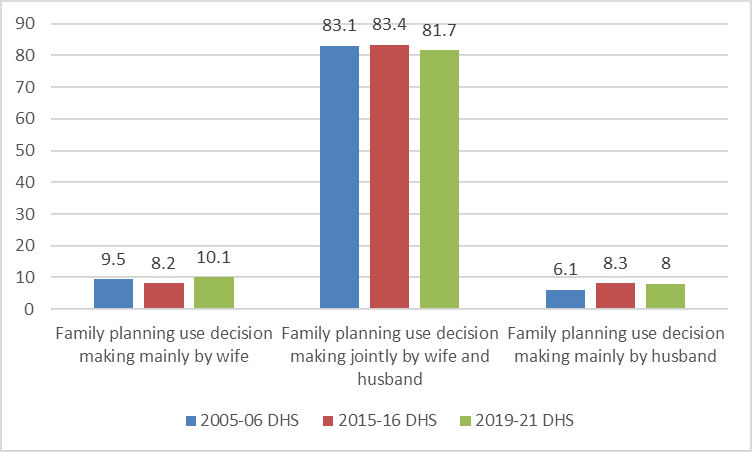
Source: Compiled by the author from https://dhsprogram.com/data/statcompiler.cfm
Figure 5 tracks the much-discussed ‘son preference” in India. It shows currently married Indian males (15-49) with two children who want no more children by number of living sons. It delineates the desire for no further children among currently married Indian males aged 15-49 with two children, broken down by the number of living sons. Data across three NFHS rounds (2005-06, 2015-16, and 2019-21) reveal a strong preference for having sons. Over 90 percent of men with two sons indicate they want no more children, a number that remains high but sees a marginal decline over the years. For families with one son, the desire for men to have no more children stays the same at 89 percent. Notably, there is a persistent gap for those with no sons, where the desire for no more children is significantly lower, at around two-thirds. This pattern suggests a continuing son preference in family planning decisions, though the slowly increasing percentages in the last category may indicate a gradual shift towards smaller family sizes regardless of the children's gender.
Figure 5: Currently married Indian males (15-49) with two children who want no more children disaggregated by the number of living sons
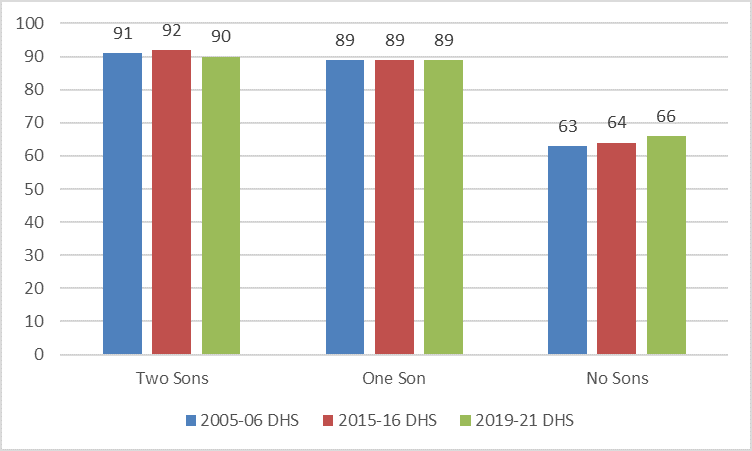
Source: Compiled by the author from https://dhsprogram.com/data/statcompiler.cfm
In nearly two decades, the landscape of gender norms and attitudes in India has witnessed a gradual yet definitive shift. The NFHS data punctuates this transition, revealing a rise in women’s decision-making autonomy and a slow, albeit inconsistent, decline in the endorsement of gender-based violence, with concerning exceptions. While the data captures a continuing consensus towards joint decision-making in family planning, it simultaneously unearths the entrenched son preference that continues to shape familial aspirations, despite slow progress. This process of change, observed through the prism of various survey rounds, underscores a society in motion—steadily unravelling traditional norms and weaving a new narrative of equality. As we approach International Women's Day, these trajectories offer a mirror reflecting both the advances and the lingering concerns that persist in the societal fabric.
Oommen C. Kurian is a Senior Fellow at the Observer Research Foundation
The views expressed above belong to the author(s). ORF research and analyses now available on Telegram! Click here to access our curated content — blogs, longforms and interviews.









 PREV
PREV



